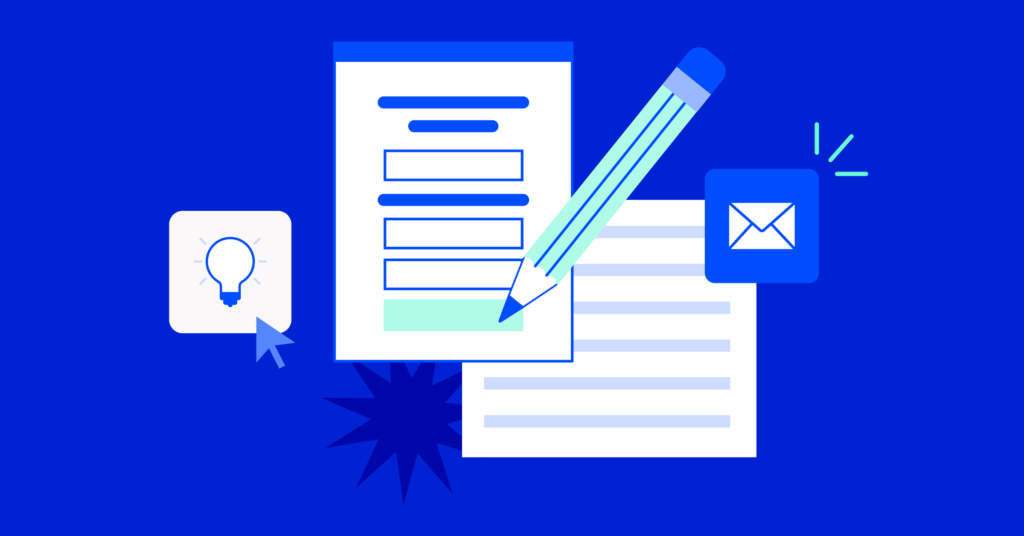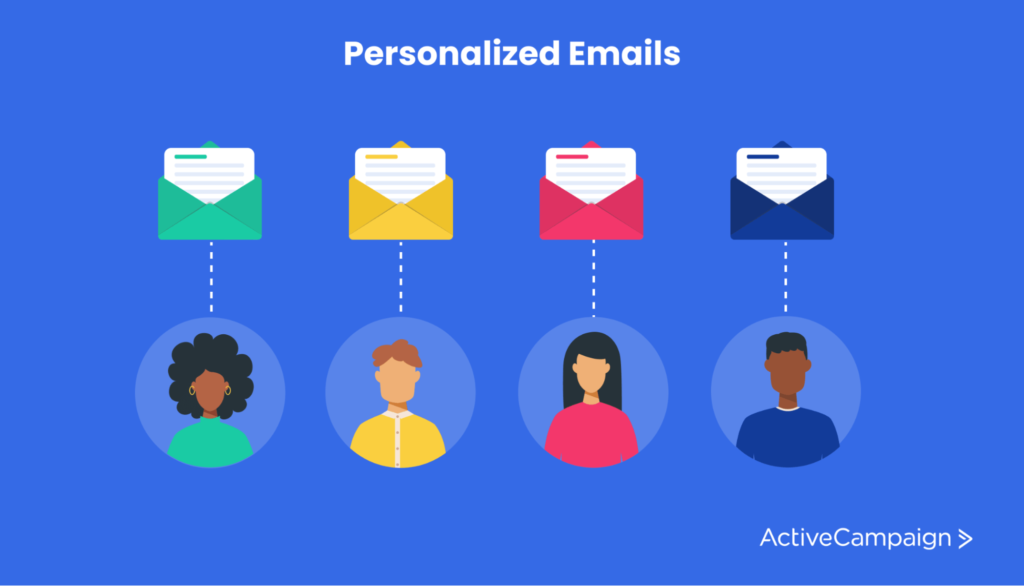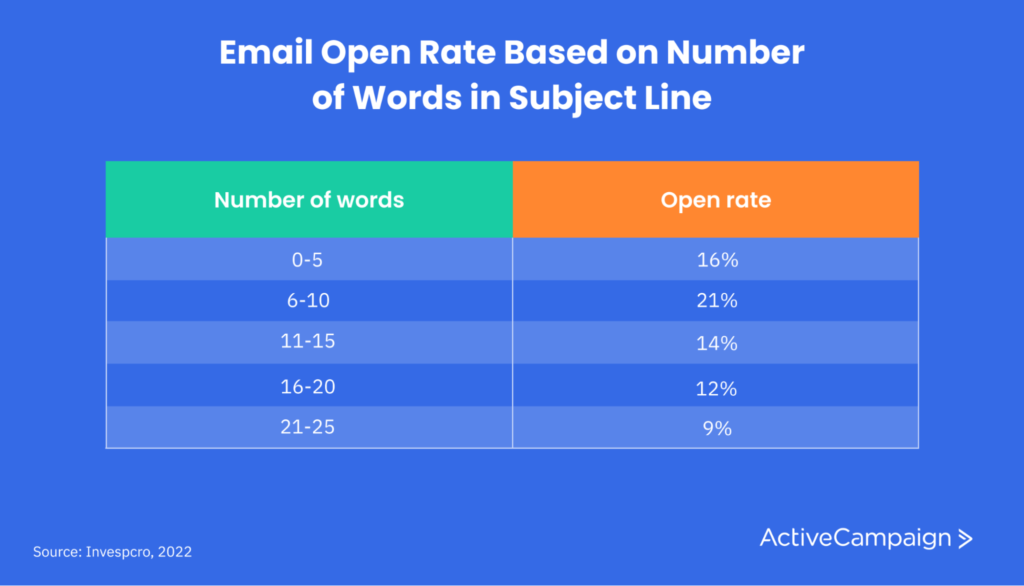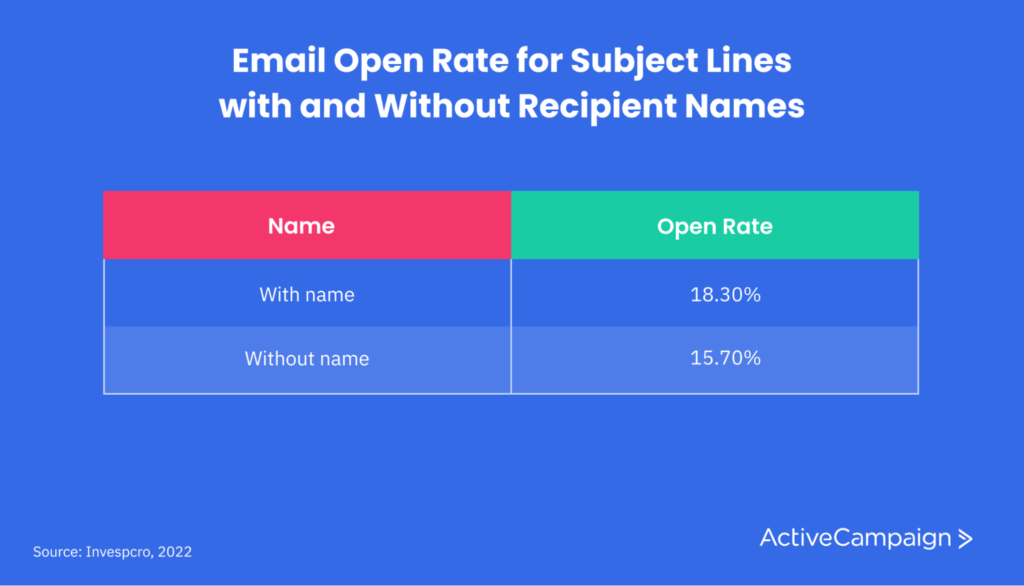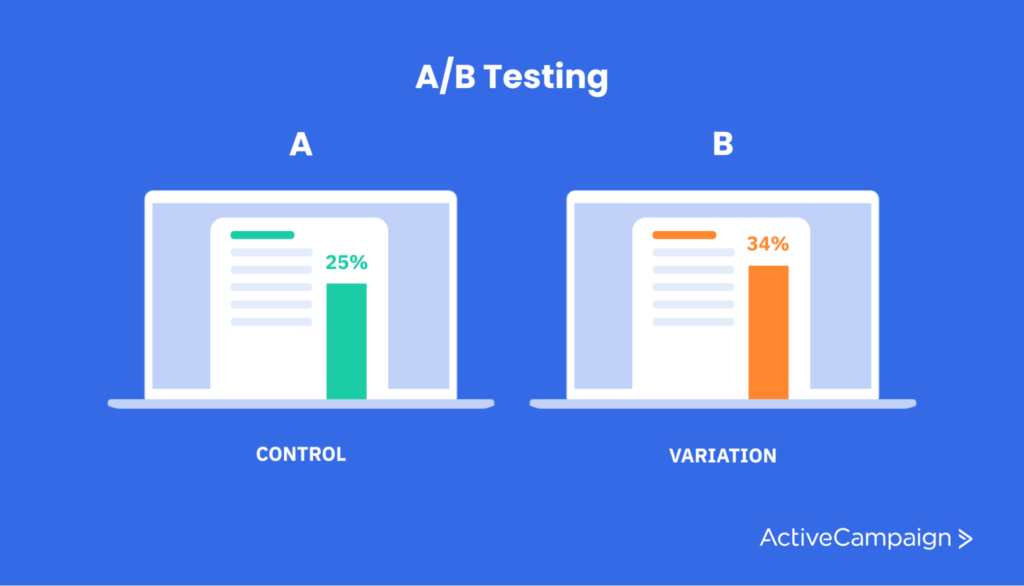No products in the cart.
Email Marketing
How to Write Follow-Up Emails: Full Information and Samples
Have you ever had your sales emails ignored?
This can be extremely frustrating—it’s the business version of being left on read. Yet, many of us get uncomfortable at the thought of writing a follow-up email. Because if they haven’t replied, that must mean they’re not interested, right?
While this might be true in some cases, the main reason why many recipients don’t respond is that emails get lost in their flooded inboxes. Sending a follow-up email might just be the thing they need to take you up on your offer.
This article will teach you everything you need to know about follow-up emails, including what they are, why they’re important, and how to create them. We’ll also give you some excellent follow-up email samples you can use in your sales efforts.
Table of Contents
What are follow-up emails?
A follow-up email is an email you send to someone you’ve already contacted. This could be for various reasons, including alerting a recipient of the initial email, requesting a reply or specific action from them, or reminding them of an important date.
The purpose of follow-up emails isn’t to initiate a conversation but rather to act as a prompt or reminder. As such, it’s best to keep follow-up emails short and to the point by including only the most essential information.
Not only does this come across as more professional, but it also makes it easy for the recipient to read and respond to your email quickly without taking too much time out of their busy schedule—which is something that all of us appreciate.
Why are follow-up emails important?
In 2020, it was estimated that roughly 306.4 billion emails were sent and received every day. If you do the math, that’s roughly 38 emails daily for each person on earth (and that’s if you were counting babies, too). Wow, that’s a lot of emails!
Emails sent and received per day worldwide from 2017 to 2025
Unfortunately, a huge portion of these emails aren’t opened. And, even worse, sometimes the emails don’t even reach the recipient’s inbox.
In 2021, the delivery status of marketing emails sent in the clothing sector stood at 87.83%—meaning that 12.17% of people didn’t even receive the email. Since this is the industry with the highest delivery rate, it means that even a higher percentage of emails in other industries never find their way to customers’ inboxes.
Therefore, the reason many of your recipients aren’t reading your emails comes down to 2 things. Your recipients are either:
- Not reading your emails because they get lost in the mass of emails in their inboxes
- Not receiving your emails in the first place
Thus, by incorporating follow-up emails into your strategy, you’ll increase your chances of the recipient receiving and reading your emails—and ultimately gain more sales.
How to write a follow-up email
Here are the 6 steps you can follow to write the perfect follow-up email.
1. Determine your goal
The first thing you need to do is determine what you want to achieve with your follow-up message.
Here are a few objectives to consider:
- Request a meeting: Do you want to meet with your recipient to pitch a product idea, receive feedback, or simply pick their brain?
- Get information: Did you forget to ask your recipient a question during your previous meeting or email and need clarity on the matter? Or, perhaps you want to determine whether you made a sale.
- Thank your recipient: Do you simply want to show your gratitude? Saying thank you to your recipient may not always require immediate action, but it does leave them with a positive impression of your brand—which could result in brand trust and loyalty.
- Catch up with your recipient: Have you not spoken to a connection in a while? Or, perhaps you heard big news about their company that created a need for your products/services. They might be in the right situation to finally take you up on your offer.
By being clear on your goal, you’ll not only be able to write a better and more relevant email, but you’ll also know what call to action (CTA) you need to use to get your recipient(s) to take action.
2. Start the email with context
74% of customers become frustrated when their email communication experience isn’t personalized.
Personalize your emails for different customers
This is true for automated follow-up emails, such as sales and marketing emails sent to an entire segment of your audience, and once-off emails sent to a single person to connect with them.
That’s why it’s vital to include a personal connection in your email. There are many ways to achieve this, including adding identifiers (such as the recipient’s name), talking about common interests, or mentioning a specific action the recipient took.
Here are some great email openers or introductory lines that provide context:
- Last time we spoke about [topic]
- We met at the [event name] last week
- Our friend, [friend’s name], suggested that I reach out to you
- I’m following up in regards to the email I sent to you a few weeks ago about [topic]
- Thank you for your help with the [topic]
3. Explain why you’re emailing
After you’ve effectively provided context in your email’s introductory line, it’s time to explain why you’re emailing. By stating your purpose early on, your email will appear more trustworthy instead of spammy and vague.
For example, instead of saying, “I’d like to meet with you to explain what I can do for your business,” you should say, “I’d like to meet with you to explain how my services can help [their business name] convert more website visitors through an effective lead magnet strategy.”
Being specific will help your customers feel like you know what you’re talking about and you’re not just wasting their time. As a result, they’ll be far more likely to respond or take you up on your offer.
Keep in mind that it’s important for you to focus on them and how you can help their life or business improve.
Get started with automation fast using our FREE pre-built email automation template starter pack!
4. Craft an attractive subject line
47% of email recipients open emails based on subject lines. This means that subject lines are 1 of the most important—if not the most important—parts of your entire email.
There are different practices for writing a compelling subject line, but 1 of the best ways is to write your subject line after you’ve written everything else.
This is because the opening line, content, and CTA of your email play a crucial role in writing a subject line that isn’t only eye-catching but also encompasses everything inside your email in a single line.
Here are some tips for crafting a good follow-up email subject line:
- Keep your subject line short and to the point: Email subject lines with 6-10 words tend to have the highest open rate.
Email open rates based on words in a subject line
- Use concrete numbers, times, and places: If you met the recipient at a specific place, include it. If you have specific data or numbers in the content, mention them.
- Try to include the recipient’s name: Emails with the recipient’s name in the subject line tend to have a higher open rate.
Email open rates based on personalized subject lines
Use our free email subject line generator to create effective subject lines for all your follow-up emails.
5. Include a call-to-action (CTA)
You need to make it as easy as possible for your recipient to respond to your email. This is where a CTA comes in.
The type of CTA you use will depend on the goal of your email. Do you want your recipient to:
- Book a meeting with you?
- Buy your product?
- Give you additional information or feedback?
Based on your goal and email content, you can craft a CTA that makes sense in the context and gives the recipient clear instructions on what they need to do next. For example:
- If you’re requesting a meeting, a great CTA to include is a meeting schedule button where they can directly schedule a meeting based on the time that suits their and your schedules.
- If you’re asking your recipient to read 1 of your posts and give you feedback, include the link to that post in your email.
- If you’re asking a lead to try out your free trial, include a “try free trial” button that automatically redirects them to your site’s free trial landing page.
6. Send your emails
After writing your entire follow-up email, including your subject line, opening line, content, and CTA, you need to determine the best time to send it.
Based on the circumstance, you’ll need to send it during a specific time to ensure that it’s still relevant to the recipient—while also ensuring that you’re not sending the email too soon or frequently that it ends up annoying them.
Here are some basic guidelines on the best times to send follow-up emails based on the type of email:
- Thank you emails can be sent within 24 hours.
- Reminder emails (after sending important documentation such as job applications) can be sent within 48 hours.
- Follow-up emails on meeting requests can be sent within 1-2 weeks of the original email, depending on the urgency of the request.
- Catch-up emails (to catch up with a past connection or when something has changed in their business) can be sent every 3 months.
Note: if automating the emails, always give a clear way to opt-out
ActiveCampaign automatically allows your subscribers to opt-out—so you don’t have to worry about getting into trouble.
Save Time on Follow-Up Emails
Save time and never miss a chance to follow-up with email automation. Get started with a 14-day free trial of ActiveCampaign.
Follow-up email samples
Here are some samples for different types of follow-up emails.
Sales follow-ups
Scenario 1: Following up after not getting a response
Subject line: Checking in re: [short phrase that covers what your last email was about]
Hi [First name],
I hope you’re doing excellent. I didn’t hear back from you about [the email you sent] and thought I’d check-in.
Have you been too busy to get back?
Have you found another [service/product provider]?
Is it just not the right time?
Let me know if you’d like me to circle back with you in the future when it’s a better time or if you’ve found another [service/product provider] and no longer require my services.
Many thanks,
[Your name]
Scenario 2: Someone asked you to follow-up later
Subject line: Ready to continue the conversation [First name]?
Hi [First name],
Last time we spoke, you asked that I get in touch with you in [amount of time] regarding [topic]. So I wanted to reach out and see if you’ve had a chance to look at [your proposal] and what we previously discussed.
I’d be more than happy to do a quick recap over the phone, so you can ask me any questions you may have.
Let me know what your calendar looks like this week so we can schedule a call.
Looking forward to hearing from you,
[Your name]
Networking follow-ups
Scenario 1: Following up after your initial meeting at a networking event
Subject line: Great meeting you at [event name]
Hi [First name],
It was great meeting you at [where you met them]. I loved hearing about your business and all that it’s accomplished. Regarding the [something they mentioned they’re struggling with], I’m confident that I can help you [problem you can solve] so you can [what they want to achieve].
Are you available to chat next week?
Let me know what time works for you.
Looking forward to hearing from you,
[Your name]
You can easily import contacts into ActiveCampaign’s automation to follow up with people you’ve met face-to-face at networking events who showed interest in working with you.
Scenario 2: Following up after a call or meeting to move on to the next step
Subject line: Next steps for [project name]
Hi [First name],
It was great chatting with you the other day and learning more about [their company name] and expectations. I’d love to start working on [project name], so you can get [results they want].
As discussed, I’ve attached a form for you to fill out. The next step is to [short sentence of the next step in the process].
Please fill out the form at your earliest convenience so we can move to the next step.
Looking forward to working with you,
[Your name]
Recruitment follow-ups
Scenario 1: Company following up with candidates post-interview
Subject line: Thanks for coming in for your interview yesterday [First name]
Hi [First name],
I just wanted to drop you a line to thank you for coming in for your interview yesterday. The team and I really enjoyed meeting you and hope you enjoyed the process too.
We’ll be taking the next few [days/weeks] to determine who the best candidate for the [job title] will be and will have an answer for you by [date].
In the meantime, please don’t hesitate to ask any questions you have about the role or process by email or phone.
Otherwise, we’ll be in touch soon.
Many thanks,
[Your name]
Scenario 2: Freelancer or independent contractor following up with a company on a proposal
Subject line: Following up on my proposal
Hi [First name],
I’m checking in to see if you’ve had a chance to look at my proposal. I think it would make sense for us to work together so we can get [mention their desired result in a short sentence] for your business.
I’ve attached a link to my website and samples of [type of work that you do that’s relevant to their business] that I’ve done in the past, in case you wanted to see examples of my work.
Looking forward to hearing from you [First name]!
Kind regards,
[Your name]
Reply to difficult emails with confidence using our FREE email reply templates!
Expert tips for follow-up emails
Here are a few tips you can implement to get the most out of your follow-up emails.
Test different emails
If you’re sending out follow-up emails on a big scale, you can try implementing A/B testing to make your emails as effective as possible. This is when you split your traffic into 2 different versions of an email and compare which performs better.
A/B testing
A/B tests will help you determine which subject lines, content, CTAs, or any other email elements perform the best. As a result, your email click and conversion rates will grow exponentially.
Use videos in your emails
The use of video in email marketing has become increasingly important, which is why 86% of businesses use video as a marketing tool. By including video in your emails, consumers are far more likely to retain the information in your email.
Eliminate certain phrases
Don’t use phrases such as “I apologize for bothering you,” “If it’s not too much trouble.” or “If you’d be so kind as to” in your emails. This immediately gives the email recipient the impression that you aren’t confident—which in their minds indicates a lack of experience or weak offering.
Instead, be confident in your email and show the recipient that you’re the ideal solution to their problem.
FAQs
How many follow-up emails should you send?
For cold email campaigns, you should aim to send no more than 3 follow-up emails to avoid annoying your potential customers. If you feel like 3 isn’t enough, you can always use other platforms such as LinkedIn or Twitter to communicate with your prospects on a personal level.
On the other hand, you can send more emails for warm follow-ups. However, remember to give enough time between your previous email and the next email to avoid annoying your recipient.
Can I automate my follow-ups?
Yes, you can automate your follow-up emails. This is especially useful if you’re sending emails to a larger group of people. Learn how to create an automated follow-up email sequence in 7 steps.
Create your follow-up emails
By following the steps outlined above and using the samples provided, you can create effective follow-up emails that recipients will respond to.
Need ready-made follow-up email templates? Get our free follow-up email templates that’ll help you attract, engage, and convert prospects.
{
“@context”: “https://schema.org”,
“@type”: “FAQPage”,
“mainEntity”: [{
“@type”: “Question”,
“name”: “What are follow-up emails?”,
“acceptedAnswer”: {
“@type”: “Answer”,
“text”: “A follow-up email is an email that you send to someone that you’ve already contacted previously. This could be for various reasons, including alerting a recipient of the initial email, requesting a reply or specific action from them, or reminding them of an important date.
The purpose of follow-up emails isn’t to initiate a conversation but rather to act as a prompt or reminder. As such, it’s best to keep follow-up emails short and to the point by including only the most important information.
Not only does this come across as more professional, but it also makes it easy for the recipient to read and respond to your email quickly without taking too much time out of their busy schedule—which is something we all appreciate.”
}
},{
“@type”: “Question”,
“name”: “Why are follow-up emails important?”,
“acceptedAnswer”: {
“@type”: “Answer”,
“text”: “In 2021, the delivery status of marketing emails sent in the clothing sector stood at 87.83%—meaning that 12.17% of people didn’t even receive the email. Since this is the industry with the highest delivery rate, it means that even a higher percentage of emails in other industries never find their way to customers’ inboxes.
Therefore, the reasons many of your recipients aren’t reading your emails come down to 2 things. Your recipients are either:
Not reading your emails because they get lost in the mass of emails in their inboxes
Not receiving your emails in the first place
Thus, by incorporating follow-up emails into your strategy, you’ll increase your chances of the recipient receiving and reading your emails—and ultimately gain more sales.”
}
},{
“@type”: “Question”,
“name”: “How to write a follow-up email?”,
“acceptedAnswer”: {
“@type”: “Answer”,
“text”: “Here are the 6 steps you can follow to write the perfect follow-up email:
1. Determine your goal
2. Start the email with context
3. Explain why you’re emailing
4. Craft an attractive subject line
5. Include a call-to-action button
6. Send your emails”
}
}]
}

